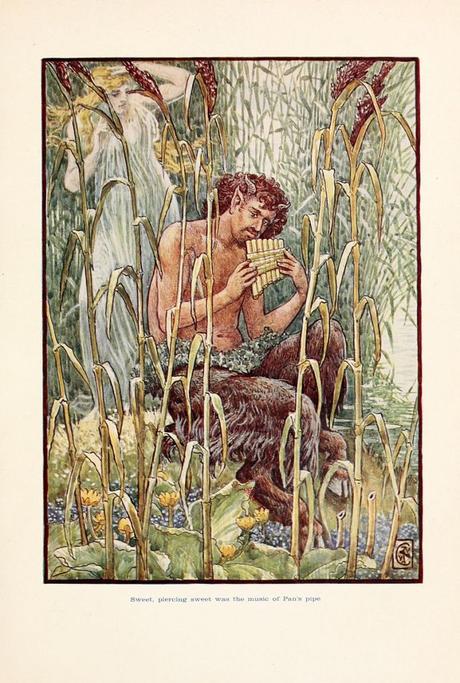The Greek god Pan has had a rough go of it. And I don’t mean that his name is a homophone for an essential kitchen item in English. No, Pan was mistreated by early Christians, made evil, and then good, before finally being largely forgotten. We’ll start with the bad and move to the good. As I discuss in one of my publications, Pan was considered evil by medieval Christians for a few reasons, apart from being a “foreign god.” First, he was associated with nature. Early Christians weren’t naturalists. They were looking to escape the world (a trait that continues to be manipulated by politicians even today). Not only that, but Pan had goat legs and horns. While horns could be used to represent any deity, including Yahweh, the combination with goat legs suggested Pan might be demonic.
 Image credit: Walter Crane, public domain via Wikimedia Commons
Image credit: Walter Crane, public domain via Wikimedia Commons
Nobody knew what demons looked like. They are incorporeal, after all. As I point out in Nightmares with the Bible, the fact that the rarely used Hebrew word for demons is roughly translated to “hairy ones” added to Pan’s sins. This was a common Hebrew phrase for goats, and over the course of many centuries, when people had the irresistible urge to draw the invisible, they gave Satan the Pan treatment. Goat lower half and horns on his head. In many esoteric groups the goat, i.e., Pan, became a symbol of demons. All of this has a rich and detailed history and it literally demonized Pan. Yes, he was all for free love, but he was a musician, after all. Then something interesting happened.
When the King James Version of the Bible was first printed, the biblical books each began with an illuminated letter. The book of Psalms began with an L. This letter was inscribed with an image of Pan. What the devil was he doing in the Good Book? Well, by 1611 Pan was considered a type (or foreshadowing, if you will) of the good shepherd. And we all know who the Good Shepherd is, right? Not only that but his name, “Pan,” translates to “all” in English. Since Jesus is “all” to Christians, it was appropriate that he be symbolized by Pan. This ancient force of nature had gone from being the Devil to representing God. Indeed, he could, at the same time, be symbolic of both. Now this is quite an accomplishment for any entity, let alone a rustic god who was never an Olympian. Pan isn’t much discussed in Christianity today, but he had a fascinating place in its view toward goats, both bad and good.
